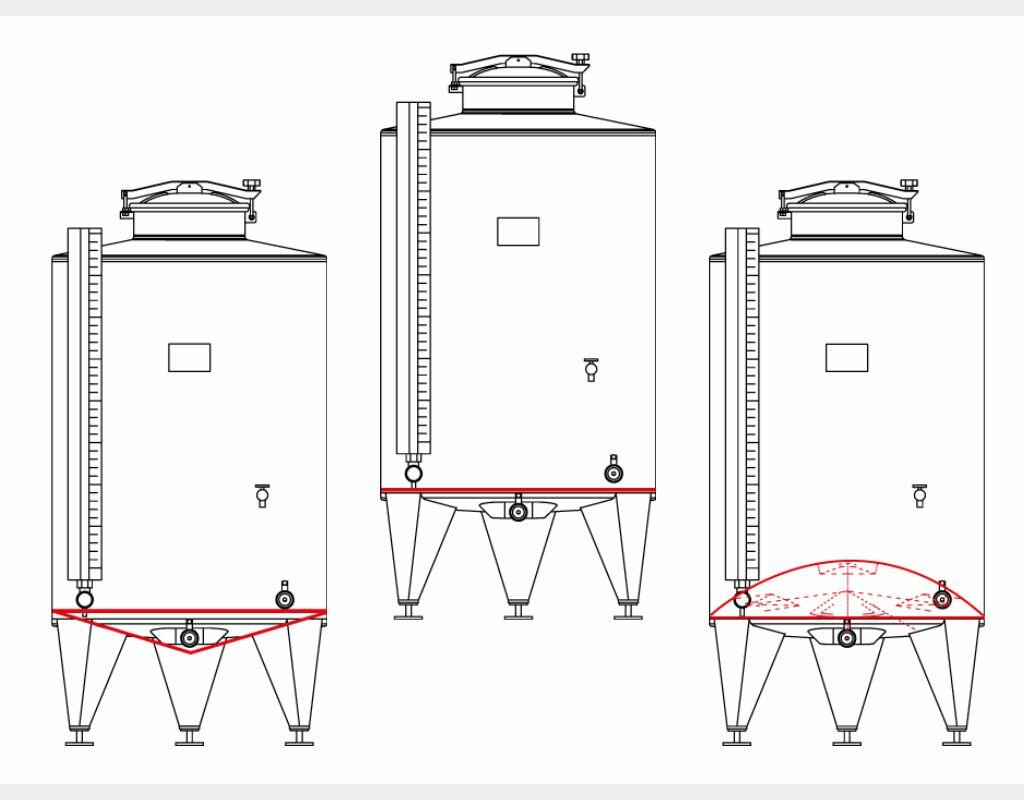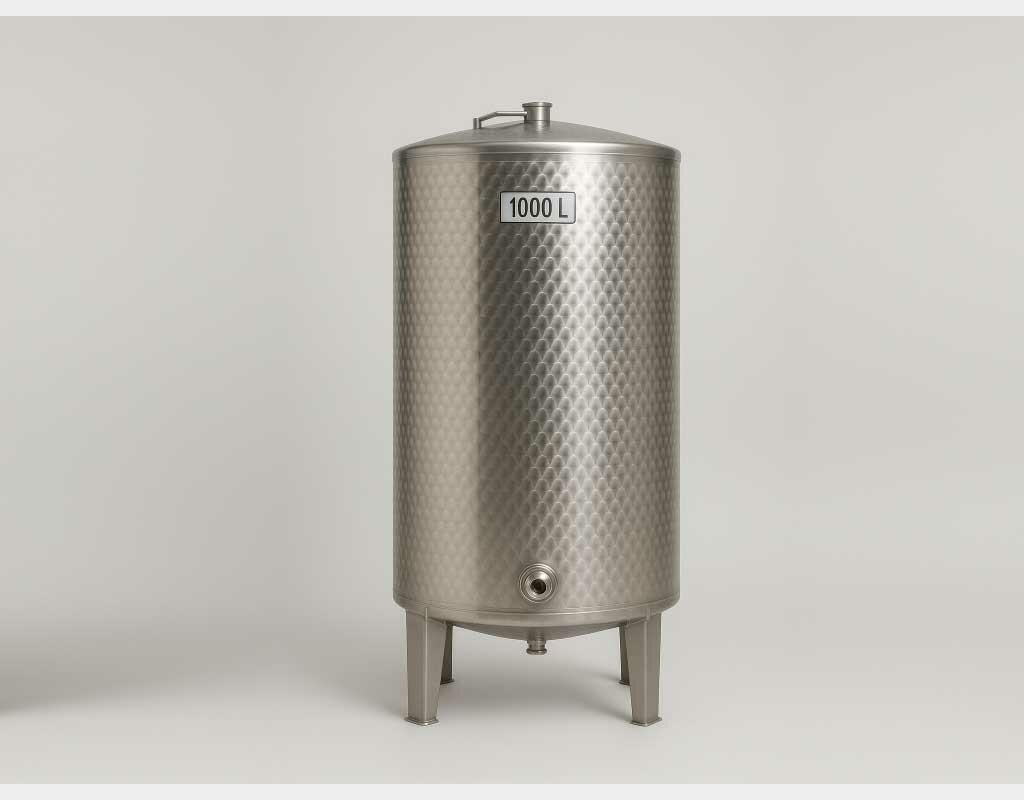Used destemmer-crushers for winemaking
Comprehensive guide to selecting and using your equipment
The destemmer-crusher is an essential tool in winemaking, designed to separate grapes from their stems (the woody part of the cluster) and gently crush the berries to extract the must. Whether you own a small estate or a larger winery, investing in a used destemmer-crusher can be a cost-effective opportunity. Second-hand winemaking equipment often provides professional quality at a lower cost while meeting the specific needs of your cellar. Before making a purchase, it's important to understand the benefits of this equipment, the key considerations, and potential pitfalls. In this guide, we help you identify the most important keywords and selection criteria, summarize customer reviews and feedback, and address common questions raised by professionals in forums. Our goal is to help you optimize your search for a used destemmer-crusher and enhance your winemaking process with suitable equipment.
Destemmer and crusher: their role in winemaking
Before discussing second-hand purchases, let's recall the importance of destemming and crushing in the winemaking process. The destemmer (also known as a destalker) functions to separate the berries from the stems that form the grape cluster, while the crusher gently crushes the grapes to release the juice without breaking the seeds. These two operations are typically performed sequentially by combined machines called destemmer-crushers, which handle both destemming and crushing in a single pass.
Why destem the grapes? The main reason is to remove the stems, which are rich in tannins and vegetal compounds that can impart bitterness or undesirable astringency to the wine. By eliminating these herbaceous parts, wines can become smoother and fruitier. Of course, some winemakers intentionally retain a portion of whole clusters to increase complexity or structure in certain wines (for example, in robust red cuvées). However, generally speaking, especially for classic red wines, rosés, or whites, destemming allows better control over the tannic profile and helps avoid unwanted "green" flavors. As for crushing, it serves to release the must by breaking the skins of the berries. This initiates fermentation by facilitating contact between the juice and natural yeasts, and it promotes the extraction of aromatic and coloring compounds from the skins.
In summary, destemming and crushing are two complementary and essential steps in winemaking. They can be performed manually (on a small scale, one can destem by hand or with scissors and crush by foot, a traditional method) or mechanically using dedicated machines. For anyone processing more than a few crates of grapes, a mechanical destemmer-crusher offers significant time savings and consistent grape processing that would be difficult to achieve manually.
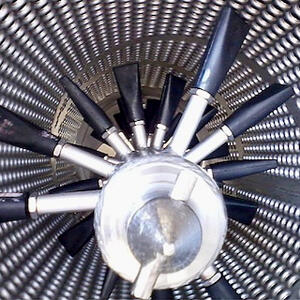 |
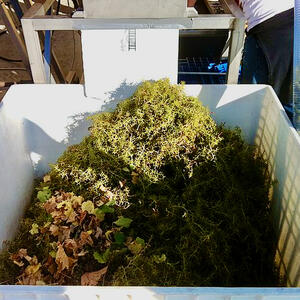 |
Why buy a pre-owned destemmer-crusher?
Choosing second-hand winemaking equipment offers several key advantages—for professionals and knowledgeable enthusiasts alike
- Cost-effective and budget-friendly :
The main reason is, of course, financial. A used destemmer-crusher typically costs significantly less than a brand-new model while delivering comparable performance. This allows small wineries or start-ups to access professional-grade equipment without breaking the bank. Savings can amount to several thousand euros compared to a new equivalent. Additionally, with rising prices and longer lead times for new machinery, the second-hand market is booming. It’s a strategic solution for anyone needing to gear up in time for harvest without waiting months—or even a year—for delivery. By investing in a used destemmer, you reduce upfront costs while gaining access to proven, high-end equipment. Experts agree: buying a pre-owned machine from a reputable brand (Bucher Vaslin, Pera, Amos, Demoisy, etc.) ensures excellent return on investment—without compromising on the quality of crushing and destemming. Simply put, it’s a smart move to maximize your budget. - Reliability and long service life :
A common misconception is that second-hand equipment is less reliable. But in reality, well-selected and properly serviced winemaking equipment offers reliability on par with new machines. Professional models are built to last. When sourced from a trusted seller, a used destemmer will often have undergone thorough technical inspections—and in many cases, complete refurbishment (replacement of worn parts, motor overhauls, deep cleaning, etc.). This is the approach taken by specialists like Arsilac and Faupin, who inspect and test every machine before resale. Choosing a destemmer-crusher selected by experts means acquiring equipment that’s robust, field-tested, and ready to serve for many more harvests. In fact, a destemmer that has already proven itself in a winery often provides greater peace of mind—it’s a sign of solid performance. - Immediate availability and accessibility :
The second-hand market often offers equipment available for immediate delivery, without the wait time of manufacturing. During harvest, this can be a lifesaver—especially if your current machine fails or you need to quickly increase capacity. It’s also a great way to access high-end equipment that may have been out of reach when buying new. For example, a small producer might afford a stainless steel destemmer from a premium brand on the second-hand market—where they’d otherwise have to settle for a more basic model. It’s also an opportunity to get your hands on rare or discontinued machines with an excellent reputation in the industry. - Lower environmental impact :
Lastly, buying pre-owned is a more sustainable choice. It gives a second life to equipment and reduces the demand for new production. Reusing machinery cuts down on the carbon footprint associated with manufacturing and transporting steel, stainless steel, and other components. For companies committed to eco-friendly practices, this is a valuable benefit to highlight.
In summary, a well-chosen used destemmer-crusher offers a smart combination of cost savings, performance, and reliability. It’s a way to improve your winemaking process without sacrificing your budget—often with equipment that performs just as well as new. That said, to make the most of these advantages, careful selection is essential. The next section outlines what to look for when choosing a second-hand destemmer-crusher.
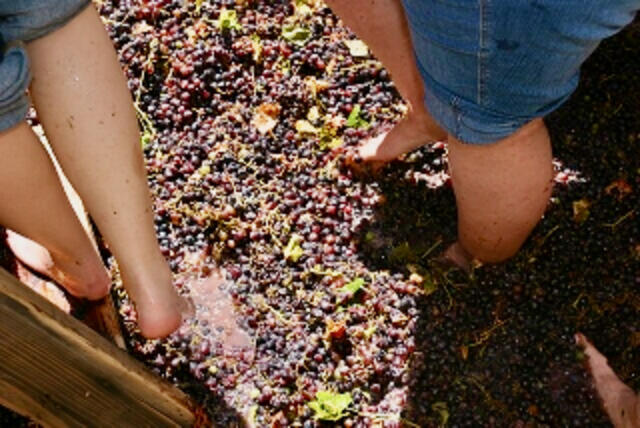
How to choose the right used destemmer-crusher
Buying a used destemmer/crusher isn't something you do on a whim. To make the right choice, here are the key criteria to consider and the right questions to ask:
1. define your capacity and output requirements
Start by assessing how many grapes you'll need to process during harvest. Destemmer-crushers are typically categorized by processing capacity, expressed in kilos or tons of grapes per hour. For example : Small manual models handle about 500 to 1,000 kg/hour. Professional electric machines can process 5 up to 100+ tons/hour for large-scale operations. There's no need to overspend on oversized equipment. Choose a unit whose hourly output matches your actual production. If you're vinifying just a few tons per year, a 1–2 tons/hour model will be more than sufficient. For a 20-hectare vineyard, look for higher capacity equipment (10+ tons/hour). Tip: Always plan for a slight capacity buffer, especially if you expect to grow or need to process quickly. Better to have a machine that's slightly too fast (which you can run shorter) than too slow — avoiding bottlenecks in the winery..
2. manual or motorized ?
This is a common question, especially among small producers: manual or electric destemmer-crusher ? Manual models (with hand crank) are suitable for very small batches — a few hundred kilos max — or occasional use. They're simple, affordable, require no power, and have fewer parts that can fail. But they do require physical effort and quickly become exhausting beyond a certain volume. As some hobbyist winemakers note, destemming 300 kg manually is back-breaking, not to mention risky or poorly done when fatigue sets in. Motorized destemmer-crushers offer continuous output without physical effort, powered by an electric motor driving the auger, beaters, and crushing rollers. They're recommended as soon as you're processing more than a ton — and essential for larger volumes.
Electric models are available in : 220V single-phase (for small units compatible with domestic outlets). 380V three-phase (for powerful professional machines). Always check the motor specs of the used unit you're considering, and make sure your facility has the proper power supply. While a motorized model costs more than a manual one, the time and labor saved often justifies the investment. In short: for small family vineyards or experiments, a used manual unit may do the trick; for any professional setup or significant volume, electric is nearly a must..
3. Overall Condition and Maintenance: Inspect Everything
When buying used equipment, take time to inspect each part thoroughly :
- Mechanical components: Manually rotate the rotor (if possible) to check for stiffness or unusual noises. On electric models, run it empty to detect issues like squeaking, worn bearings, etc.
- Destemming cage/screen: This perforated drum must be intact — no dents, cracks, or residue. A warped or blocked screen will affect performance. Also check internal paintwork (for painted steel units). Some screens are replaceable, but not always — especially on older models.
- Beater shaft: Check that the paddles are complete, with no excessive play or deformation. A bent shaft can damage the cage.
- Crushing rollers: If included, inspect for cleanliness, alignment, and cracks. Ask if the gap between rollers is adjustable.
- Motor and electrical: Check the nameplate, start the machine, and listen for odd sounds or smells. Smooth transmission and essential safety features (guards, emergency stop) are non-negotiable.
- Maintenance history: Ask the seller about past servicing — cleaning after harvest, storage conditions, replaced parts. A machine that’s been well-maintained and kept in dry storage is far more likely to last.
Treat buying a used destemmer like buying a used car: inspect, test, ask questions. Better yet, bring along a colleague or expert familiar with this type of equipment to avoid missing anything critical.
〃Carefully selected pre-owned equipment – As reliable as new〃
Upgrading your winery with a pre-owned destemmer-crusher is often a smart move, combining cost-efficiency, performance, and reliability. By following the tips in this guide — from identifying the right search keywords to understanding key customer benefits and evaluating technical specifications — you’ll boost your chances of finding the perfect equipment for your winemaking needs. From small family estates to seasoned wine producers, many benefit from these machines that streamline operations and enhance wine quality. Remember, proper preparation and careful maintenance are essential to make your investment last.
✖ Not sure if your project is feasible ?
Don’t hesitate to reach out to an Arsilac advisor if you have any questions or would like more information about our available pre-owned destemmers and crushers for winemaking. We'll help you find the right equipment to meet your needs.
#destemmer #crusher #winemakingequipment #grapeprocessing #winerysolutions
_
Note : This article is for informational purposes only and does not constitute professional advice. We recommend consulting with industry experts and complying with applicable regulations.


